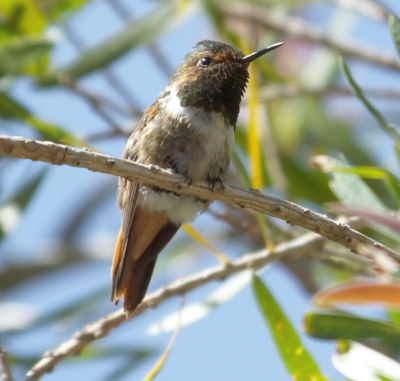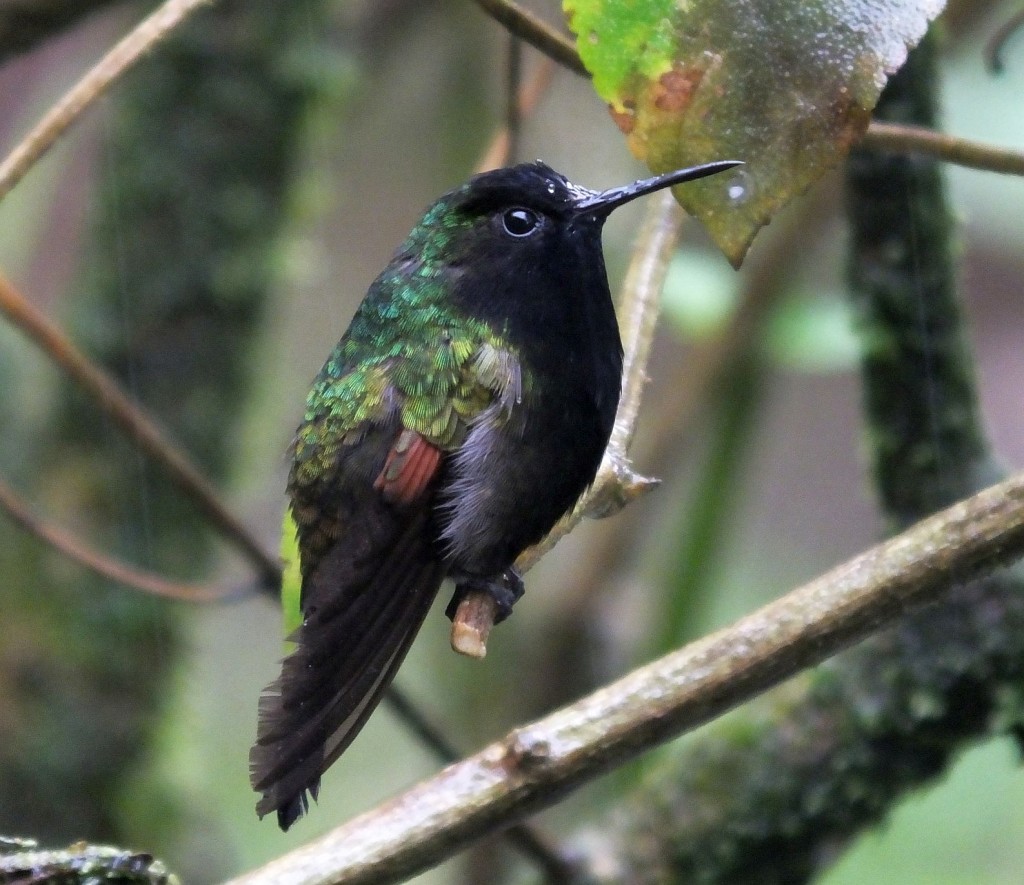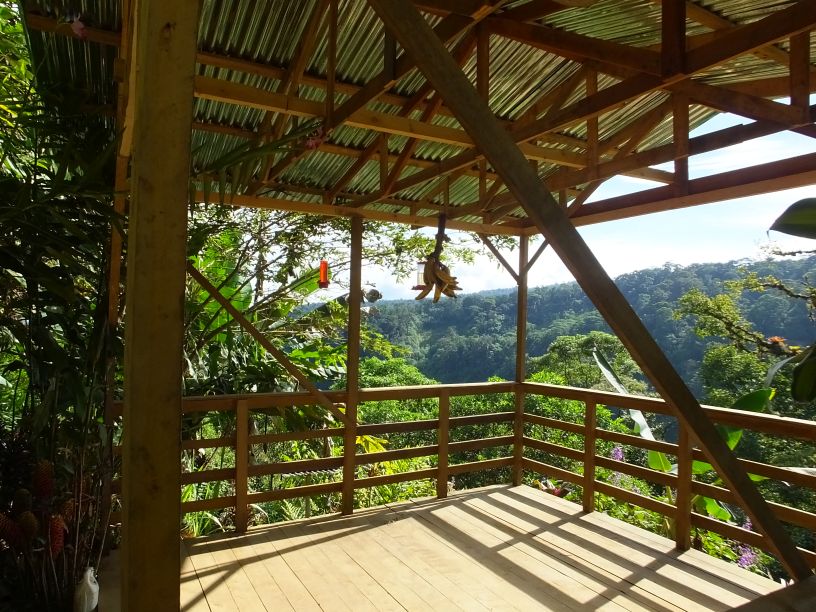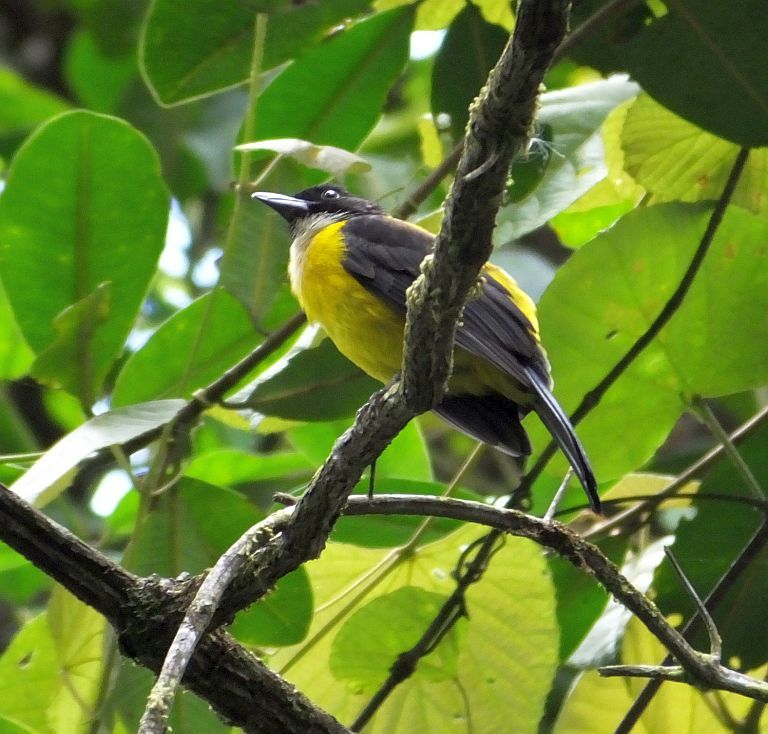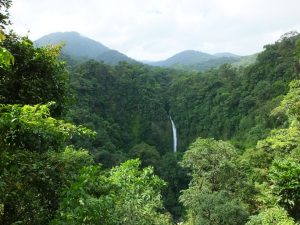What does it take to have the best birding trip to Costa Rica? The birding trip that surpasses your goals?
Make no doubt about it, the birds of Costa Rica are calling- literally and figuratively. This morning, in my residential neighborhood, I heard the laugh of a Lineated Woodpecker. There were Rufous-collared Sparrows bringing some morning cheer and groups of excited Crimson-fronted Parakeets screeching overhead.
Looking to the north, I can see green mountains topped with clouds. There’s different bird voices up there and they might be too far to hear but as I gaze into the distant living jade, I still know what’s calling.
Black-billed Nightingale-Thrushes sing like Hermit Thrushes from the top parts of Poas Volcano.

Their voices are joined by the odd cascading calls of Large-footed Finches (think big, weird, olive-colored towhees), the chips of Sooty-capped Chlorospinguses, and even the high-pitched calls of the unique Wrenthrush.

There are dozens of other birds up there, even more on the way to the mountains, and hundreds of species on the other side. All are calling, beckoning birders to come see them.
At least that’s the way I see it. I hear them and my perpetual hope is that birders everywhere can hear those birds too, can come and witness this treasure of biodiversity, this natural gift.
It’s also why I hope that when you do go birding in Costa Rica, you have the best birding trip to Costa Rica. To make that happen, consider these five suggestions. Whether birding Costa Rica a tour or on your own, stick to these tips and you can’t go wrong.
Decide how you want go birding in Costa Rica and know what that means
These days, birding isn’t just looking at birds. There is strict bird photography, adventurous full on focused birdwatching, relaxed birding combined with beach visits, you name it. It’s still birding but before you take a birding trip anywhere, you need to decide what sort of birding you want to do and arrange your trip accordingly.
For example, if bird photography in Costa Rica is your thing, you won’t want to spend a lot of time in low light situations. You’ll be on the road to surpassing expectations if you focus on the very best sites for bird photography. This means that you’ll probably sacrifice seeing some other species but you’ll get great shots of lots of other birds.
If you want to see as many birds as possible and are willing to work to make that happen, true full monty birding requires early starts, long days, and maybe some visits to sites off the beaten track. This is giving yourself over to the birds and although that means no coffee tours or beach time, it could also translate to 400 species and some of the best birding days of your life.
Relaxed birding in Costa Rica? Sure! Most people actually do this type of birding and it just means watching birds at a less frenzied pace. Maybe birding with some pool time, maybe some time on a beach, and perhaps doing a few other things. You’ll still see a lot but know that you probably won’t see various shy birds or other species that require focused birding ay key sites.
Go birding with friends
I like to bird on my own too but let’s face it, the best birding is shared with like-minded people whom you enjoy spending time with. Yeah, you gotta pick the right travel companions but there’s nothing like experiencing the unreal nature of a Three-wattled Bellbird and the magnificent madness of a Resplendent Quetzal with birding pals.
Your local birding club will work too!
Hire an experienced local guide
No matter where you go, the birding trip will be much better if you hire a good, local guide. Even one or two days of guiding can help you see dozens more birds, and maybe even owls and rare species.
However, to make this work, you can’t just hire any old guide. Sure, a number of guides will help you see some new birds and will be alright but you’ll have a better chance of surpassing expectations if you find a birding guide with lots of experience, who truly knows where every bird is, what it takes to see them, and how to identify them in an instant.

If you go the birding tour route, do your research and see which company has the best local guides.
On your own? Research where to go
If you do the trip on your own instead of taking a tour, research that trip far in advance. Do that and you’ll find the places best for you and your birding needs with as little in-country travel as possible.
But where to find the best birding information for Costa Rica?
Checking out other trip itineraries and eBird hotspots are good places to start. Keep in mind, though, that they aren’t the final word. I can promise there are dozens of other fantastic sites for birding in Costa Rica that are not visited on tours. Such sites don’t work with the tour route or just with the logistics of a group. However, they can be perfect for birding on your own.
However, many of these sites don’t stand out on eBird either. This is because, in Costa Rica, a high percentage of eBirding takes place at the same places commonly visited on birding tours, and there isn’t nearly as much coverage as in the USA and Canada.
So how can a birder know about other good, possible birding sites? Satellite maps. As with everywhere, in Costa Rica, the birds are where the habitat is. Check maps and it won’t take long to find the largest areas of forest.
You have to factor in accommodation and access but at least you will know where a lot of the best birding sites are.

But what about suggestions on social media sites? While you will get plenty of answers on where to go birding, from what I have seen, the majority of answers come from people who simply enjoyed their time in Costa Rica, are selling something, or are submitted by local casual birders. In other words, there’ll be lots of suggestions but few answers from the real experts.
Think of someone asking where to go birding in your region and a dozen people answer how they had wonderful times at local parks seeing common birds. They are giving answers based on their experiences but what do they really know about birding in your region? Probably very little. This doesn’t mean their experiences aren’t valid and that they didn’t have a good time, but maybe they didn’t visit places where owls roost, nor the best places for certain species.
You’ll get the best answers from expert local guides or from other, more detailed information (my 900 page birding site guide for Costa Rica will probably help).
Accompany early morning coffee with the dawn chorus
One of the simple joys in life is sipping high quality Costa Rican coffee while listening to the dawn chorus, especially in tropical habitats. I was going to start that sentence with “For the birding crowd” but then I realized that this is a simple joy suited for everybody.

Well, as long as you like coffee but seriously, sipping fantastic coffee as the rainforest comes to life? Hard to beat my friends, hard to beat.
Bonus Tip- Study Your Field Guide (learn some sounds too!)
As with birding in any new place, even if you go with the best birding guide, your trip will always be better if you study beforehand. Take time to see which birds to expect, and which ones you want to see the most. Learn about their habits, habitats, and what to expect. It’s also worth learning some of their songs.

Maybe not all 930 plus species (yes, that many, sites that say 800 species either don’t know what they are talking about or need a serious update) but learning vocalizations for 50 or even 20 common birds can enhance your trip.
At the moment, there are a couple must have field guide books. They are “The Birds of Costa Rica- A Field Guide” by Garrigues and Dean, and “The Birds of Costa Rica” by Dyer and Howell. Both are good for any birding trip to Costa Rica.
The best digital field guide is the Costa Rica Birds app. Yes, Merlin is free but this app has:
- All species on the Costa Rica list and various expected species that could occur including all pelagic birds.
- Sounds for most species on the app.
- Tips for identifying and seeing each bird.
- Filters to show birds by region, habitat, and more.
- It can be personalized to show target species, birds that you see, and more.
- At this time, it’s only available for IOS.
I could always say more but at least the tips mentioned above will help you set up your best birding trip to Costa Rica. If you need help arranging a trip or guiding for yourself or for a group, I’m happy to help! Contact me at information@birdingcraft.com
As always, I hope to see you here while watching some White-fronted Parrots or marveling over a roosting Great Potoo.







